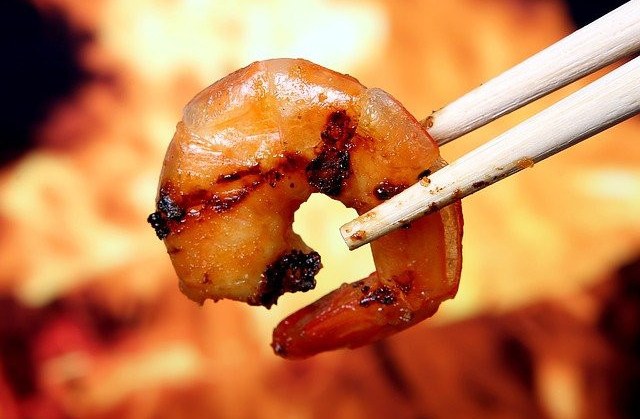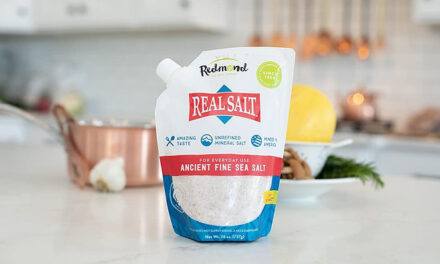Planning a diabetes diet isn’t very difficult if you include more seafood in it. Aside from fish, there are few other kinds of seafood that are rich in heart-healthy fats and nutrition. Some say shrimp is one of the best food choices for people with diabetes. But, is that true? Can people with diabetes eat shrimp?
Having a low in carbs, low saturated fat and high in protein with a lot of Omega-3 Fatty Acids and the antioxidant astaxanthin diet is vital for the overall health of anyone with diabetes. Of course, the diet also needs to be high in other nutrients such as calcium, zinc, and iodine.
It is a protein-rich food that makes it ideal for diabetics as protein helps to stabilize blood glucose levels, provides stable energy, and keeps one full for longer.
Shrimps are loaded with Omega-3 fatty acids. These fatty acids are essential and will help in maintaining the overall health of a person with diabetes. But, the answer to the topic question is not that simple.
Let’s dig deeper to get our head around the relationship between shrimp and blood glucose.
First thing first, let’s define shrimp.
What Is Shrimp?
Shrimp is a type of shellfish found abundantly all over the world inhabiting both fresh and saltwater. They are small crustaceans that vary in size from about the size of a quarter to “jumbo” shrimp, which are several inches long.
Shrimp belong to the order of crustaceans known as decapods because they have ten pairs of limbs. They are scavengers that live on algae, plankton, and any decaying matter. Shrimp and prawns are closely related and most people use the term shrimps and prawns interchangeably both in fisheries and for culinary purposes but they are different animals. Shrimp and prawns are two crustaceans that can swim through the water.
Shrimp can be found wild out there in the ocean or sea or farmed. China, Indonesia, Thailand, Brazil, India, Vietnam, Ecuador, and Bangladesh are the biggest producers of shrimp.
They are extremely tasty and add a slightly sweet, briny, and tender taste to whatever it’s cooked with.
It can be prepared in many ways using different recipes from different cultures. It can be boiled, fried, grilled, fermented, broiled, stir-fried, sauteed, barbecued, and used in soups, stews, salads, pasta, curries, kebabs, and appetizers. We also have cuisines like pineapple shrimp, coconut shrimp, lemon shrimp, shrimp burger, shrimp sandwich, pepper shrimp, and shrimp fajitas.
Dried shrimps are typically used as flavoring.
What is The Nutritional Content of Shrimp?
A 100g serving of plain cooked shrimp contains:
|
Calories: 99 |
% daily value |
|
Protein: 23.9g |
48% |
|
Cholesterol: 122mg | |
|
Fat: 0.3g |
0% |
|
Carbohydrates: 0.2g |
0% |
|
Fiber: 0 | |
|
Calcium: 70mg |
5% |
|
Iron: 0.51mg |
13% |
|
Phosphorus: 237 mg |
20% |
|
Magnesium: 39mg |
9% |
|
Copper: 0.38 |
13% |
|
Zinc: 1.64 |
7% |
|
Potassium: 259mg |
7% |
|
Sodium: 111mg |
4% |
|
Manganese: 0.03mg |
3% |
|
Selenium |
54% |
|
Vitamin D | |
|
Vitamin B12 | |
|
Vitamin B3 | |
|
Vitamin B6 | |
|
Vitamin B2 | |
|
Vitamin B1 | |
|
Vitamin B5 | |
|
Vitamin A | |
|
Vitamin C | |
|
Vitamin E | |
|
Folate |
Source: USDA
Shrimp vs Prawn – What is The Difference?
Shrimp and prawns are both seafood and are classified as shellfish. We easily confuse the two because they look alike and most people use their names interchangeably even in aquatic farming. They are also used interchangeably for culinary purposes.
Both of them are decapod crustaceans, meaning they have 10 legs and external skeletons. But the two are not the same animal. Shrimp and prawns are anatomically different and belong to different sub-orders.
Here is the list of differences between shrimp and prawns.
|
Shrimp |
Prawn |
|
Found mostly in salt water |
Found mostly in fresh water |
|
Smaller in size |
Bigger in size |
|
The body is curled or curved |
The body is straight |
|
Have a plate- like or lamellar gills |
With a branching gills |
|
Part of pleocyemata sub-order |
Part of dendrobranchiata sub-order |
|
Have claws on two pairs of the legs |
Have claws on three pairs of the legs |
|
The second segment overlaps both the first and third segment |
Bodies are segmented with each segment overlapping on the next |
|
Broods eggs on the underneath their bodies |
Releases in egg into the water |
Shrimp vs Fish – What is The Difference?
Both shrimp and fish are aquatic life, they are both seafood and a rich source of protein. Both of them are cold-blooded, predators and scavengers they breathe with their gills but they belong to different classes, shrimps are arthropods of the crustacean sub- phylum while fish are chordates.
They also differ in size and physical structure.
Here is the list of differences between shrimp and fish.
|
Shrimp |
Fish |
|
Belong to the phylum arthropods and the class crustacean |
Belong to the phylum chordata and the clacc craniate |
|
Have an external skeleton (exoskeleton) |
Have an internal skeleton |
|
Have 10 sets of limbs for propelling themselves through the water and walking on the ocean beds |
Have no limbs but have fins for swimming |
|
The abdomen is segmented and encased in a hardened shell that serves as a type armor |
The head, abdomen and thorax are very flexible. The muscles over the bone frame is covered by skin and most fish have scales |
|
They are invertebrates |
They are vertebrates |
Now, with that background knowledge about, shrimp, prawns and fish, let’s look at the relationship between shrimp and diabetes.
Can Diabetics Eat Shrimp?
Aside from eating nutritious food, one of the things people with diabetes should aim for while enjoying their meals is to eliminate excess carbs from their diet because this can spike their blood glucose levels. To achieve this, people with diabetes simply go for foods that are low in carbs.
Shrimp is one of the best food choices for people with diabetes. It has very little or no carbs, low in calories, and high in protein and water. It also contains more than 20 different vitamins and minerals that help to promote a healthy body like sodium, iodine zinc, calcium, iron, potassium, phosphorus, and manganese.
It is high in the best types of omega 3 fatty acids, which is very important if you have diabetes and 100g of shrimp provides more than 50% of the daily requirement for Selenium. This mineral can help to ease inflammation and encourage a healthy heart.
Is Shrimp Good for Diabetics?
This shrimp is not just delicious and tasty but also healthy which makes it favorite seafood, for many including people with diabetes.
It is low in carb but high in protein. It is low in saturated fat and a rich source of omega 3 fatty acids which can make it an ideal diet for diabetics. This is because protein does not only help to stabilize the blood glucose level and in metabolizing fat, but it also satisfies and keeps one full for longer. It has almost zero carbs, so it will not spike your blood sugar.
Shrimp are low glycemic index food with almost zero carbs. Consuming it will not cause any spike in your blood glucose levels. Therefore, it is safe to include Shrimp in a diabetes diet.
Although shrimp is high in cholesterol, it is low in saturated fat, which means that the high cholesterol content can actually improve the bad cholesterol by increasing the good cholesterol and also reducing the triglycerides.
Shrimp is loaded with a lot of Omega-3 Fatty Acids that are vital for the overall health of a person with diabetes.
In diabetics, as a result of their bodies’ inability to respond normally to insulin, glucose can’t get across to damaged cell membranes at the normal rate. This increases the level of sugar in the bloodstream, which causes havoc in the body.
Omega-3 fatty acids help to maintain and repair damaged cell membranes. Shrimp is amassed with different types of Omega-3 fats. Most omega 3 fatty acids in shrimps are in animal form – (DHA and EPA), which is better than the omega-3 fatty acid in plant form (e.g. ALA).
They are healthy, easy to digest, and easy to absorb in the body.
What Does Research Say?
Sadly, there is hardly any high-level research on the benefits of shrimps for people with diabetes, but there are studies of the health benefits of the nutritional content of shrimps such as omega-3 fatty acids and astaxanthin.
As mentioned earlier, shrimp is a healthy source of omega 3 fatty acids. Research has shown that there is a link between low omega -3 fatty acids and insulin resistance.
In a 24 weeks study carried out in 2017 on type 2 diabetes Mexican adults shows that the daily supplementation of 540mg omega-3 fatty acids daily resulted in lower blood glucose levels, lower HbA1c, reduced waist circumference, and lower leptin levels when compared to a placebo. There was also an improvement in their lipids profile with a significant decrease in triglycerides and atherogenic index scores.
Also, a 2018 review of studies concludes that omega-3 supplements were linked to improvements in cardiovascular markers among type 2 diabetic patients. The results of the reviews establish that omega-3 supplementation was associated with significant reductions in LDL cholesterol, triglycerides, VLDL cholesterol, and HbA1c. Also, there was an improvement in glycemic, inflammation markers TNF-alpha and interleukin-6.
Shrimp is also abundant in astaxanthin, a carotenoid that gives shrimp its color. It is a powerful antioxidant loaded with anti-inflammatory and anti-fatigue properties.
There are lots of studies on the benefits of astaxanthin, especially for people with diabetes. It helps to protect against oxidative stress. Studies have shown that it can help to lower the risk of metabolic syndrome and prevent the progression of diabetic nephropathy.
In a study, scientists discovered that astaxanthin protected the beta cells by reducing glucose toxicity in diabetic rats. In another study carried out in 2018, the result shows astaxanthin can improve glucose metabolism and reduce blood pressure in type 2 diabetic patients. Also, a 2011 study shows that astaxanthin can’t help to improve LDL cholesterol.
Health Benefits of Shrimps
Here is a list of health benefits shrimp can add on to your life, regardless of you have diabetes or not.
- Promote bone health
A deficiency in dietary proteins and minerals such as calcium is the cause of deterioration of bone quality, bone mass, strength, and overall mass, which are the main symptoms of osteoporosis.
Shrimp is high in protein and various minerals, such as calcium, phosphorus, and magnesium, which can effectively help to prevent bone degeneration. So including it in your weekly diet can help to slow down the effects of aging bones and keep you stronger.
- Improve Brain Health
Shrimp have iron which is an essential mineral. Iron helps oxygen bond with hemoglobin. This increases the circulation of oxygen in the body.
The increase in the flow of oxygen to the muscles provides strength, while the increase in oxygen flow to the brain has been shown to improve cognition, memory, and concentration.
Also, studies have shown that astaxanthin found in shrimp may help to promote memory performance, improve the survival of brain cells, and lower the chance of brain inflammatory diseases.
- May Promote Weight Loss
If you want to shed some weight, adding shrimp to your diet is an ideal choice as it is low in carbs, low in calories, and packed with nutrients. It is high in protein, so it can keep you full for long.
For you to achieve this weight loss goal, you have to be careful how you prepare the shrimp though. If you prepare by deep-frying, adding it to a creamy sauce may get the opposite result.
Plus, shrimp is high in zinc which is one mineral that can boost the level of leptin in the body. Leptin is an essential hormone in the body that is held in regulating fat storage, appetite, and the energy used in the body. Leptin can help to prevent overeating and unexplainable food craving even after being full.
- Lower the risk of cardiovascular disease
Fermented shrimp paste, another popular way to prepare shrimp, may contain a fibrinolytic enzyme. This is a powerful enzyme that can be used to curb cardiovascular disease. It can be used for thrombolytic therapy.
Thrombolytic therapy is a way of dissolving dangerous blood clots within the blood vessels.
Also, the high levels of omega-3 fatty acid in shrimp may help to eliminate bad cholesterol, which can further help in reducing the chance of heart attacks and strokes.
- Provides Anti-Aging Properties
Shrimp contains high levels of astaxanthin, a type of carotenoid with a powerful antioxidant that can reduce the signs of aging to a great extent and protect the skin cells from damages.
Studies suggest that the antioxidant astaxanthin helps prevent wrinkles and lessens UV damage.
- May Lower the Age-Related Macular Degeneration
Studies indicate that astaxanthin, a heparin-like compound found in shrimp, may help in treating neovascular Age-Related Macular Degeneration (AMD).
The astaxanthin may also relieve eye fatigue, especially for those who are always watching the screens or working with computers for long durations in their private or professional lives.
- It may help with menstrual pain
Shrimps are a good source of omega 3 fatty acids. Omega 3 fatty acids may help to balance out the negative effects of omega-6 fatty acids, help to ease menstrual cramps and also promote blood flow to the reproductive organs by lowering other harmful forms of cholesterol in the bloodstream.
- May Prevent Hair Loss and nail breakage
As mentioned earlier, shrimp is high in zinc which can help improve the health of our hair. It plays a major role in maintaining and creating new cells, which include skin and hair cells. Zinc deficiency may cause hair loss.
- It is a good source of iodine
Iodine in shrimp can help the human body with thyroid hormones.
Tips for Making Shrimps Safer For Diabetics?
Although shrimps are low in carbs and glycemic index, how you prepare the shrimps also matters a lot.
If you have diabetes and want to enjoy the full benefit of eating shrimp without tipping the scale to the opposite direction — stay away from;
high carb batters,
breaded shrimp,
coconut shrimp, and s
shrimp deep-fried in unhealthy oils
because they are packed with extra carbs, add more fat, which increases the calories of the shrimp.
It is more advisable for people with diabetes to either steam, barbecue, broil, bake, grill, stir-fry or saute it. You can also enjoy it as a cocktail so long as the cocktail sauce is sugar-free, as most cocktail sauces contain a fair amount of sugar that is not suitable for people with diabetes.
Risks of Eating Shrimps
Just like most food or sources of nutrients, the following are the risk of eating shrimp. Please be aware.
- Food poisoning
Shrimp is popular and eaten as a delicacy in many countries. In most regions of the world, shrimp are eaten raw, and the fluid inside their head is seen as a special treat.
In Japan, raw shrimps are consumed as sashimi, while it is consumed raw in China after soaking it in baijiu – a type of strong liquor.
Many people reckon that it is unsafe to consume raw shrimp because it is most likely to increase the risk of food poisoning as shrimp may bottle parasites, bacteria, and viruses that could bring about food poisoning or illnesses with the following symptoms.
○ Stomach cramps
○ vomiting
○ Fever
○ Diarrhea
Most often raw shrimp contain Vibrio, a bacterium found in aquatic habitats. With over 70 species in existence, 12 of which are recognized as illness-causing bacteria. Some Vibrio species are responsible for conditions like cholera, gastritis, and infections.
Because of the risk of food poisoning, consuming raw shrimp is not recommended. These harmful microorganisms that the shrimp may harbor can only be killed by heat, so cooking it under a high temperature is recommended.
- Allergic reaction
Shrimp, like other shellfish, is one of the most common food allergens. Most people suffer allergic reactions when they consume shrimp.
Symptoms of shrimp allergies include digestive issues, abdominal pain, nausea, sneezing, tingling in the mouth, nasal congestion, or skin reactions such as hives and itchy skin after eating it.
In severe cases, some people with shrimp allergies may experience anaphylactic reactions. This is a sudden reaction that requires immediate treatment, if not, it may result in seizures, unconsciousness, and even death. So, stay away from shrimp or any food prepared with shrimp in it if you are allergic to shrimp.
- Mercury poisoning
Mercury is harmful to human health and can lead to mercury poisoning, impaired vision, and reduced fetal health.
Just like most seafood, shrimp do contain trace amounts of mercury. You can lower the risk of Mercury poisoning by balancing your diet with controlled amounts of shrimp.
- Shrimp may be contaminated with antibiotics
Due to the fact that seafood is highly susceptible to disease, farm-raised seafood in some countries is often treated with antibiotics.
There is no verifiable evidence that using antibiotics in shrimp has any major adverse health effects. However, it is believed that it may result in antibiotic resistance, which can cause outbreaks of diseases that do not respond to treatments with antibiotics.
How To Prepare Shrimp Safely To Reduce The Risk Of Food Poisoning And Cross-Contamination?
Cooking the shrimp properly can eliminate most of the harmful bacteria and viruses and reduce the risk of food poisoning. Cook the shrimp until they have reached an internal temperature of 145F (63℃) or they are opaque or pink in color are eliminated during the cooking process.
Also, improper harvesting, processing, and storage techniques can increase the risk of contamination.
To prevent cooking utensils, surfaces, and other food from getting contaminated with the bacteria and virus from the shrimp, follow the below tips.
- Buy shrimp from a reputable source.
- Choose the ones that the label certifies that the processing method is safe and conforms to food safety guidelines.
- Refrigerate fresh shrimp and eat within 4 days or keep it frozen for up to 5 months.
To minimize the spread of harmful bacteria, transfer the frozen shrimp to a refrigerator and leave it overnight or up to 24 hours to thaw the frozen shrimp.
- Wash your shrimp thoroughly before preparing it and to prevent cross-contaminating other food items ensure that other food items are kept at a safe distance while handling the shrimp.
Alternate Healthier Seafood Options for Diabetics
There are other alternatives and healthy seafood options you can eat. They are heart-healthy, a great source of omega-3 fatty acids – EPA and DHA, low in carb, and high in quality protein to help stabilize blood sugar levels.
The healthier seafood options includes;
- Fatty fish, such as salmon, herring, mackerel, tuna, sardines, and anchovies.
- Shellfish such as crabs, lobster, clams, oysters, and mussels.
Conclusion
It is right to say that seafood such as shrimp can be one of the best and healthy low-carb diets for people with diabetes. They are high in protein, low in saturated fat, loaded with healthy omega-3 fatty acids, minerals, and vitamins.
Shrimp is nutritious with a lot of health benefits, plus it is so tasty, which makes it absolutely amazing. With a low glycemic index, anyone can enjoy it without worrying about weight gain, increase in blood glucose levels, calories, carbs, and cholesterol.
There are different ways of preparing shrimp, but you have to be careful about how to prepare it, especially if you are diabetic or trying to lose weight. Deep-frying the shrimp, adding creamy sauce to it, or preparing in any way that can add extra sugar, fat, carbs, or calories to the shrimp, such as breaded shrimp or coconut shrimp is not recommended if you are diabetic.
Yeah, despite all the packages of goodness packed in shrimp, there are still some concerns about the quality of the shrimp, such as the possibility of causing food poisoning, mercury poisoning, and the probability that it may be contaminated with antibiotics.
So, it is very important that you get high-quality shrimp from reputable suppliers. Ensure that your shrimp is properly cooked to prevent food poisoning.
Stay away from shrimp or any food prepared with it if you are allergic to it.














It’s good to have this information about shrimp and its impact on those with diabetes. I wonder what other types of seafood are good for people who have diabetes. I feel like some types of seafood, like salmon, have a similar nutritional value to shrimp, so maybe I will look into that. Thank you for sharing this good info on shrimp!